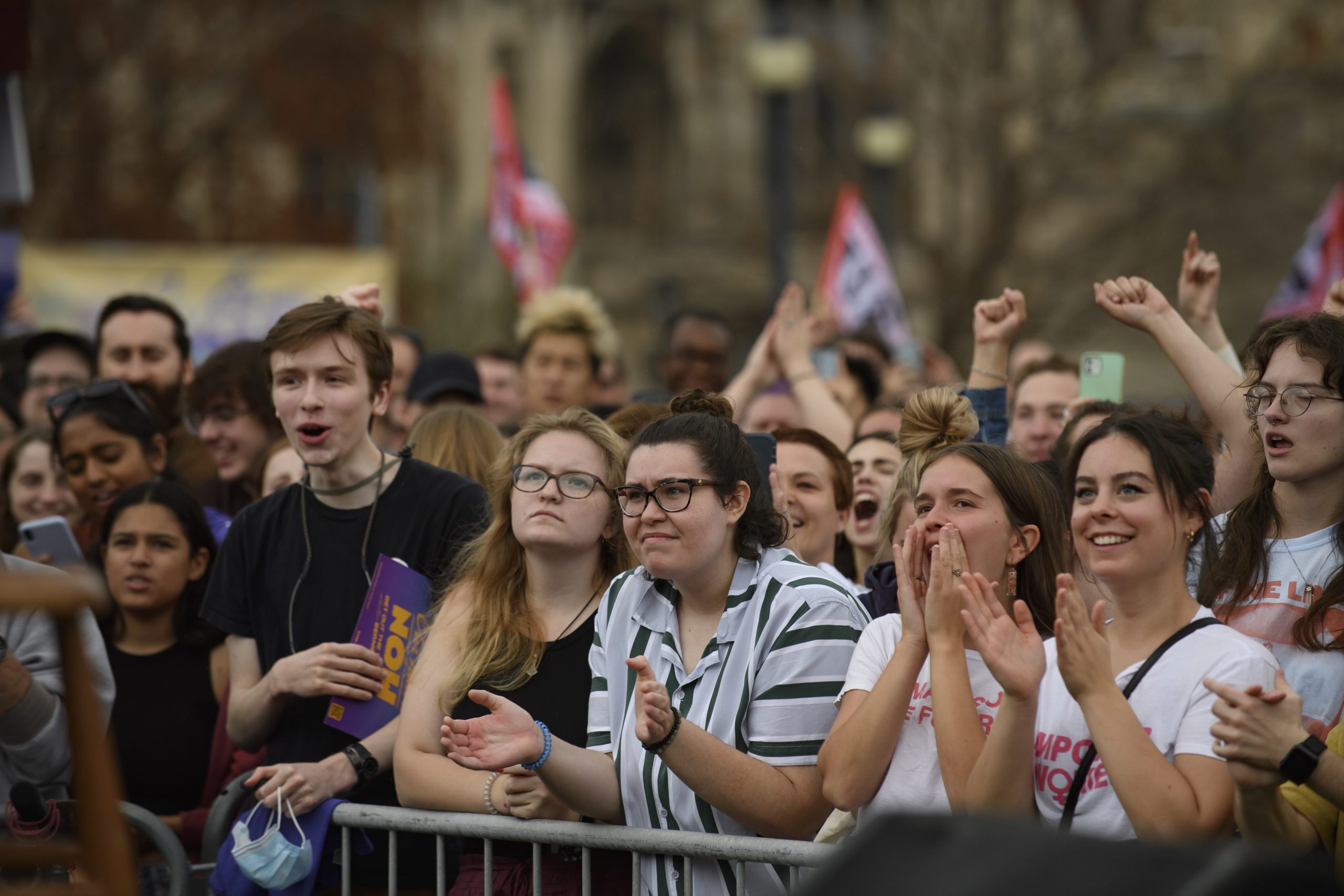The midterm elections took some time to sort out. But one thing was made clear quickly: Gen Z voters are a force to be reckoned with—for both parties. That’s a lesson elected officials need to start taking now—from this year’s lame duck session to next year’s divided government.
One of the most significant reasons that the predicted Red Wave didn’t occur is higher turnout among Gen Z and the youngest Millennial voters. According to exit polls, voters under 30 turned out at close to 30 percent for the midterm election—a historically high rate second only to their turnout in 2018.
Black youth broke nearly 90 percent for Democrats, as did almost 70 percent of Latinx youth. These are the highest percentages for Democrats of any demographics. Nearly 60 percent of white youth also broke Democratic.
Overall, voters aged 18-29 went 63 percent Democratic and just 35 percent Republican.
Compare this to Baby Boomers, who went nearly 55 percent Republican. Some 58 percent of white people overall backed Republicans. Those identifying female and college educated broke for Democrats, but not at margins approaching the youth vote. Wealthier Americans voted for Republicans. Older Millennials, aged 30 to 44, were split between parties.
By far, the largest margins for Democratic candidates came from voters under aged 18-29.
The future of the voting public should be clear to leaders of both parties.
But the deeper message is that younger voters aren’t necessarily loyal to the Democratic party. They are voting on the issues that matter to them—and against the threats to democracy and their civil and human rights posed by the right wing. The youth voter organization YVote identifies gun control, bodily autonomy, LGBTQ rights, immigration, student debt relief, anti-racism, and criminal justice reform among the top issues for young people.
Insofar as the Democratic Party aligns with these interests, they will enjoy an edge with young voters.
This is the generation that grew up with the Sandy Hook school massacre and became politicized around gun control with the shocking 2018 Parkland, Florida school shooting, and more recently the massacre of elementary school children in Uvalde, Texas.
This is the generation of the Sunrise Movement and Greta Thunberg—Gen Zers fighting to stop the climate crisis. These are the nation’s Dreamers who came to this country as children without documentation and are fighting for a path to citizenship in the only country they know as home.
This generation, the most racially and ethnically diverse in history, experienced the deaths of 12-year-old Tamir Rice, Trayvon Martin, and George Floyd at the hands of police. More than one in five of this generation identify as LGBTQ, and that number is expected to rise.
These young voters aren’t just voting. They’re also starting to run for office themselves—and winning.
Maxell Alejandro Frost, an Afro-Cuban American, age 25, made history as the youngest person to be sent to Congress, winning in the red state of Florida on a gun safety agenda.
Joe Vogel made history as a 25-year-old gay, Latino, Jewish immigrant elected to the Maryland state legislature. Vogel refused corporate campaign funding, reflecting Gen Z’s critiques of a capitalist system that values profit over people and the planet.
Nabeela Syed, also 25, made history as a hijabi South Asian woman elected to the Illinois state legislature running against racism and hate in schools and for gender equity and common sense gun control.
Young voters also provided a crucial margin of victory for Democrats in such critical swing states as Pennsylvania, Arizona, Wisconsin.
These voters are a force to be reckoned with, and they will only be getting stronger and more influential as more of them reach voting age.
However, elected officials will eventually need to deliver substantive change. With the power of these emerging Gen Z voters and candidates, whichever party can deliver on the issues that Gen Z turns out to run and to vote on is the party that will determine the future of America.
